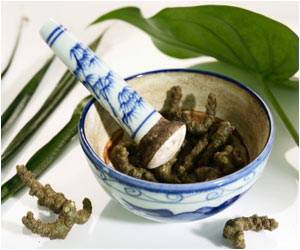Qigong therapy, a form of traditional Chinese medical practice, including a variety of Chinese energy exercises can offer alternative treatment for people with osteoarthritis, suggest researchers.
Qigong therapy, a form of traditional Chinese medical practice, including a variety of Chinese energy exercises can offer alternative treatment for people with osteoarthritis, suggest researchers.
Traditional Chinese medicine (TCM) suggests the existence of a subtle energy (qi) circulating throughout the body and in the surrounding environment.According to TCM, good health is the result of free-flowing, well-balance 'qi', while sickness or pain is the result of a blockage of the 'qi' flow or unbalanced 'qi' in the body.
Osteoarthritis patients are increasingly using complementary and alternative medicine treatments, including Qigong therapy, used in China for treating arthritis.
"Although further research needs to be conducted, Qigong may be an effective complementary treatment for osteoarthritis," said Dr. Adam Perlman, chair of the Department of Primary Care, executive director of the UMDNJ-Institute for Complementary and Alternative Medicine and a co-investigator on the study.
"Given the limitation and potential adverse effects of drug intervention of osteoarthritis, Qigong therapy might prove to be a valuable option as a supplement to conventional treatment," he added.
During the study, two Qigong therapists were invited to participate, using external Qigong therapy.
Advertisement
Both therapists were trained in China, but from different traditions. The first healer had lineal heritage in Taoism and was known for his anticancer training and achievement.
Advertisement
It was noted that there is considerable variability in the forms of EQT practice, varying by school and practitioner.
The researchers found that participants reported significant pain reduction and functionality in varying degrees after therapy.
The study was published in the April 2008 edition of Clinical Rheumatology.
Source-ANI
SRM









